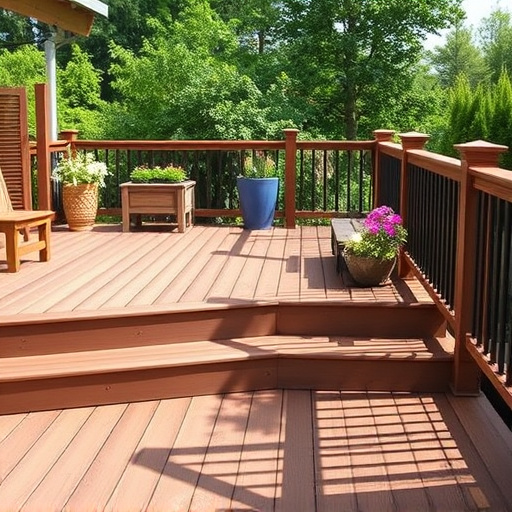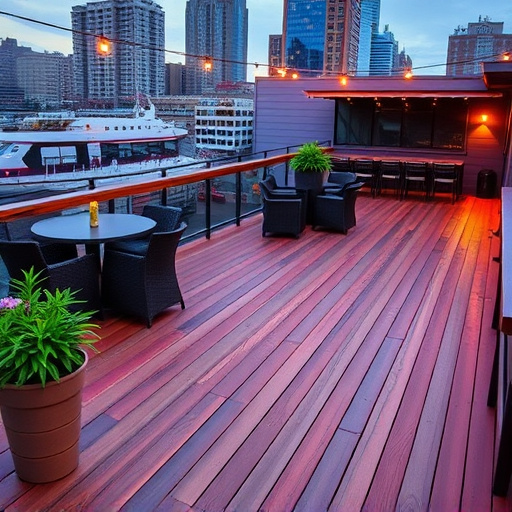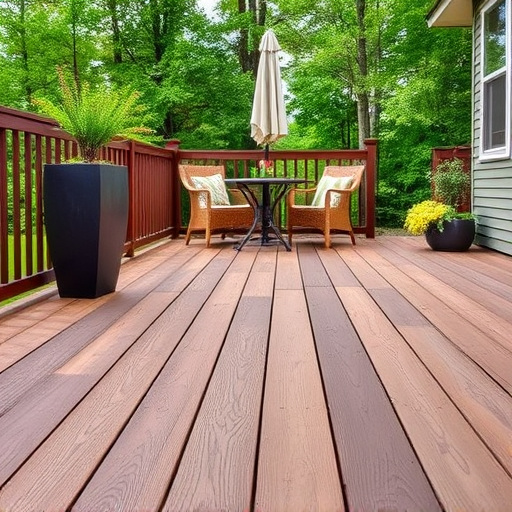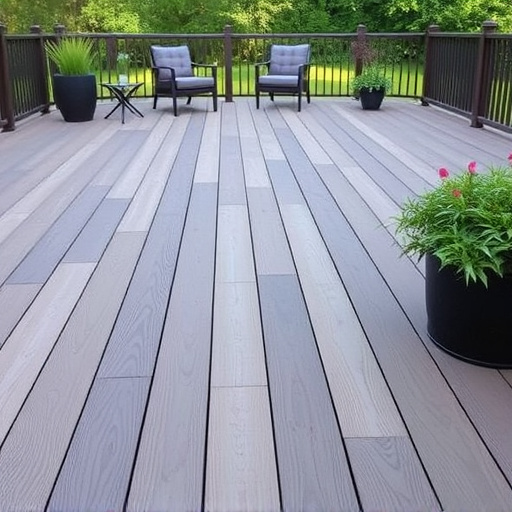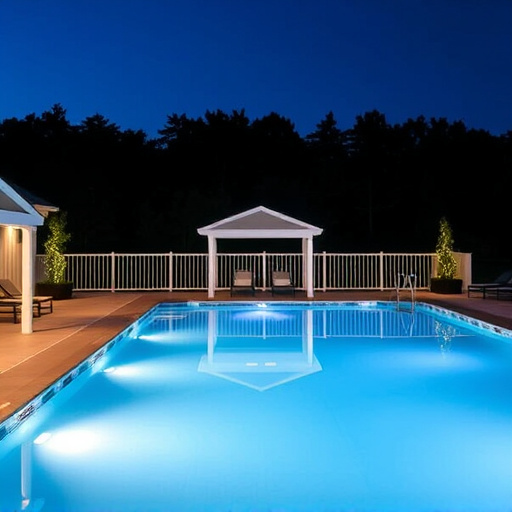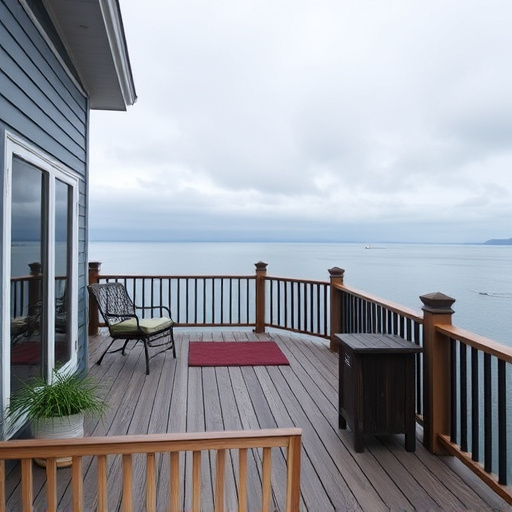When planning a deck, prioritize deck planning for structural integrity and user safety by adhering to local building codes, incorporating safety features like slip-resistant surfaces and robust fastening, and integrating roofing and siding. Ensure proper framing with sturdy materials, safe fastening systems, and robust railings to prevent accidents. Regular inspections, adequate lighting, and non-slip surfaces are essential for a well-planned deck that enhances outdoor living and increases home value through practical solutions like effective gutter management.
Planning a deck addition to your home? Safe deck planning is paramount for protecting your family and guests. This guide covers essential safety considerations every homeowner should know before diving into deck planning. From understanding industry standards like those set by the International Residential Code (IRC) to ensuring robust structural integrity, learn how to create a secure outdoor living space that’s both functional and enjoyable. Discover best practices for maintaining a safe deck environment throughout installation and ongoing upkeep.
- Understanding Deck Planning Safety Standards
- Essential Structural Considerations for Decks
- Maintaining a Safe Deck Environment
Understanding Deck Planning Safety Standards
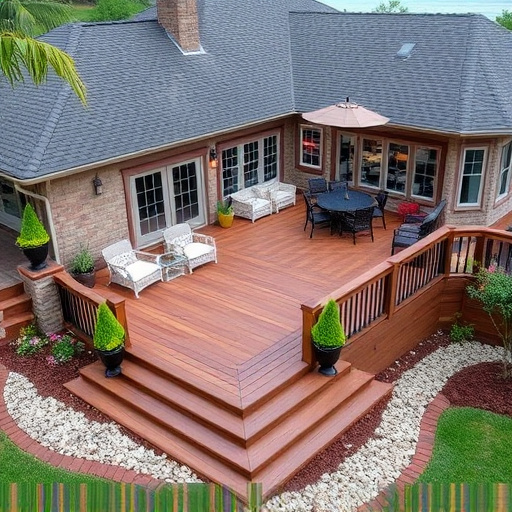
When planning a deck, it’s crucial to understand and adhere to safety standards set by local building codes. These guidelines are designed to ensure that your deck is structurally sound and safe for use. Important considerations include deck height, handrail placement, and stairwell design, all of which can impact potential risks. For instance, in many areas, there are specific requirements for the height of railings and the spacing between slats to prevent falls, especially in homes with young children or elderly residents.
Additionally, integrating safety features such as slip-resistant surfaces, properly installed lighting, and robust fastening mechanisms is essential. Incorporating these measures not only complies with planning safety standards but also enhances the overall functionality and accessibility of your deck. Moreover, considering the integration of roofing and siding during deck construction can provide extra protection from weather conditions, ensuring a safer and more durable outdoor living space.
Essential Structural Considerations for Decks
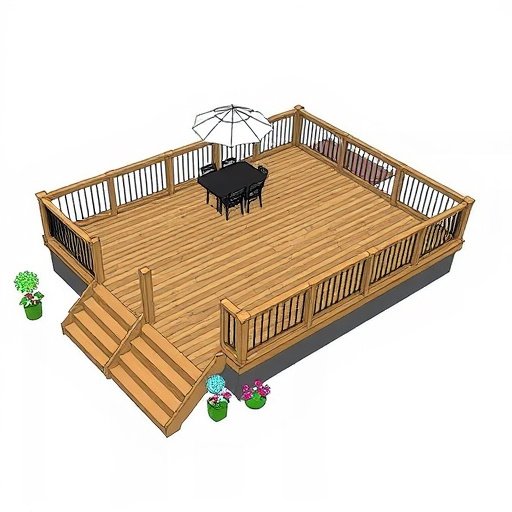
When planning a deck, homeowners must consider essential structural elements to ensure safety and longevity. Proper framing is crucial, utilizing sturdy materials like treated lumber or composite boards that can withstand environmental conditions. The layout should account for adequate support beams placed at regular intervals, securely fastened to the joists and foundation. This robust framework is vital to prevent bowing or sagging over time.
Additionally, deck planning involves integrating safe and secure fastening systems, such as screws or nails designed for exterior use, which enhance structural integrity. It’s also important to factor in the weight load capacity of the deck, taking into account potential furniture, people, and equipment placement. Incorporating robust railings and guards further strengthens safety measures, especially for higher decks, preventing accidents and providing a sense of security.
Maintaining a Safe Deck Environment
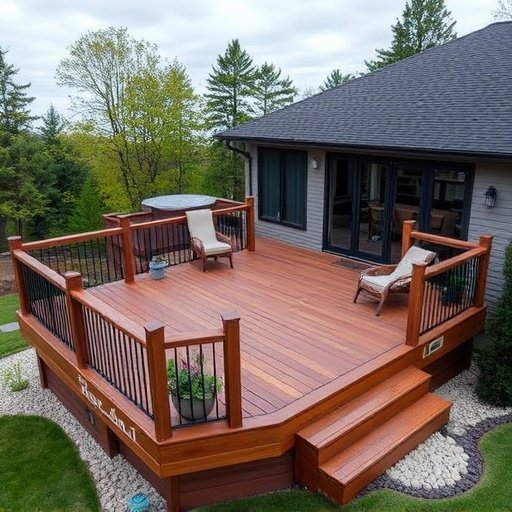
Maintaining a safe deck environment is paramount for any homeowner looking to enjoy their outdoor living space year-round. A well-planned deck incorporates safety features from the design stage, ensuring structural integrity and clear pathways free from tripping hazards. Regular inspections are crucial, identifying potential issues like loose rails, rotten wooden planks, or damaged decking boards that could pose significant risks.
Implementing proper lighting is another essential safety consideration for decks. Adequate illumination ensures visibility during evening gatherings or late-night outings, reducing the risk of accidents and enhancing overall peace of mind. Additionally, integrating non-slip surfaces and handrails offers stability, especially in wet conditions, making your deck a safer and more enjoyable place to spend time with family and friends. Think about these safety measures as integral components of your deck planning process, ultimately contributing to a secure and welcoming outdoor environment that complements your home’s beauty and increases its value through practical, long-lasting commercial siding and effective gutter management—key elements in any comprehensive home service solutions package.
When planning and maintaining your deck, adhering to safety standards is paramount. By understanding structural considerations and keeping your deck environment safe, you create a durable and secure outdoor space for your family and guests to enjoy. Remember, proper deck planning ensures not only the integrity of your structure but also peace of mind.








